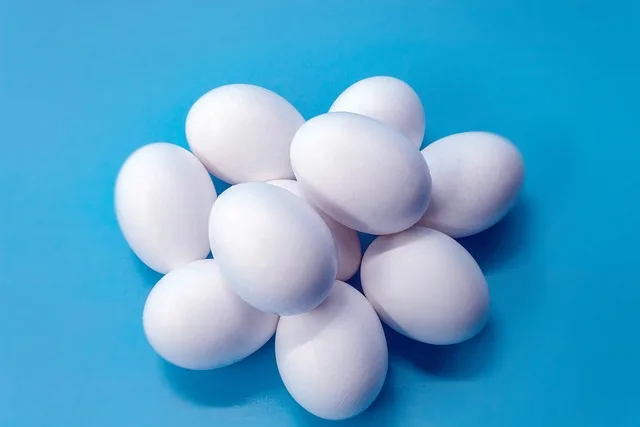First things first, gather your supplies. You’ll need some sandpaper, a good quality paint or stain, and a glaze or wax for that perfect aged finish. Think of this as your treasure map; each item is a step toward uncovering the hidden potential of your cabinets. Start by lightly sanding the surfaces to create a rough texture. This isn’t just busywork; it helps the paint adhere better, like a good friend who sticks around when you need them most.
Next, choose your paint color. A soft cream or muted gray can work wonders, giving your cabinets that timeless look. Apply a couple of coats, letting each layer dry completely. It’s like building a cake; you want each layer to be just right before adding the next. Once your paint is dry, it’s time to add the magic touch—glazing! Mix your glaze with a bit of paint to create a translucent finish. Apply it with a brush, then wipe off the excess with a cloth. This step is where the real transformation happens, as the glaze settles into the nooks and crannies, highlighting the details.
Transform Your Space: A Step-by-Step Guide to Antiquing Kitchen Cabinets
First things first, gather your supplies. You’ll need some chalk paint, a good quality brush, sandpaper, and a wax finish. Think of chalk paint as the fairy dust that will breathe new life into your cabinets. It’s easy to work with and gives that lovely matte finish that screams vintage.
Next, prep your cabinets. This is like the foundation of a house; if it’s not solid, everything else will crumble. Remove the doors and hardware, then clean them thoroughly. A little elbow grease goes a long way! Once they’re clean, lightly sand the surfaces. This helps the paint stick better, kind of like how a good primer sets the stage for a masterpiece.
Now, it’s time to paint! Apply your chalk paint in even strokes, letting each coat dry before adding another. Think of this as layering flavors in a delicious dish; each layer adds depth and richness. Once you’re satisfied with the color, grab that sandpaper again and gently distress the edges. This gives your cabinets that coveted antique look, as if they’ve been lovingly worn over the years.
From Modern to Timeless: Mastering the Art of Antiquing Your Kitchen Cabinets
Antiquing isn’t just about slapping on some paint and calling it a day. It’s like giving your cabinets a personality makeover! Start by choosing a base color that complements your kitchen’s vibe. A soft cream or muted gray can work wonders. Once you’ve got that down, it’s time to add depth. Think of it as giving your cabinets a warm hug with a darker glaze. This technique highlights the grooves and details, making them pop like a well-crafted piece of art.
Now, let’s talk about the magic of distressing. Picture this: your cabinets have been through years of family dinners and holiday chaos. You can replicate that history by gently sanding the edges or using a hammer to create subtle dents. It’s like giving your cabinets a backstory, making them feel lived-in and loved.
And don’t forget about the hardware! Swapping out modern handles for vintage knobs can elevate the entire look. It’s like putting on the perfect accessory that ties your outfit together.
Revive Your Kitchen: Creative Techniques for Antiquing Cabinets Like a Pro
First off, think about using a glaze. This magical mixture can transform your cabinets from bland to grand in no time. Simply mix some paint with a glazing medium, and apply it over your existing color. Wipe off the excess with a cloth, and watch as the details of your cabinet doors pop! It’s like giving your cabinets a stylish shadow that highlights their character.
Next up, consider distressing. This technique is all about embracing imperfections. Grab a hammer, sandpaper, or even a chain, and gently beat or rub the edges of your cabinets. It’s a bit like giving them a history lesson—each ding and scratch tells a story. Just imagine how much more inviting your kitchen will feel with that rustic touch!
Don’t forget about the power of color! A soft, muted hue can work wonders. Think of colors like sage green or dusty blue that evoke a sense of nostalgia. When you paint your cabinets in these shades and then add a bit of white wax, you’ll create a beautiful, aged effect that’s simply irresistible.
Lastly, accessorize! Swap out your hardware for vintage-style knobs or handles. It’s like putting the cherry on top of a sundae—small details can make a huge difference. So, roll up your sleeves and get ready to transform your kitchen into a space that feels warm, inviting, and full of character!
Antique Charm: How to Give Your Kitchen Cabinets a Vintage Makeover

First off, think about color. Soft, muted tones like sage green or dusty blue can instantly transport your cabinets back in time. Grab some chalk paint—it’s a game changer! It adheres beautifully and gives that lovely matte finish reminiscent of yesteryears. Plus, it’s super easy to work with, even if you’re a DIY newbie. Just a couple of coats, and you’ll be well on your way to vintage bliss.
Next, let’s talk hardware. Swapping out your modern knobs and pulls for antique-style ones can make a world of difference. Picture ornate brass handles or ceramic knobs with floral patterns. They’re like the cherry on top of your vintage sundae! You can find these gems at thrift stores or online marketplaces, often at a fraction of the cost of new ones.

Now, don’t forget about distressing! This technique adds character and a sense of history to your cabinets. Lightly sand the edges or use a damp cloth to wipe away some paint in spots. It’s like giving your cabinets a little love tap from the past.
DIY Delight: Easy Tips for Achieving an Antique Look on Kitchen Cabinets
First off, consider the power of paint. A soft, muted color can work wonders. Think of shades like dusty blue or faded sage—these hues evoke a sense of nostalgia. Grab a can of chalk paint; it’s perfect for that matte finish that screams “old-world charm.” Just imagine how a fresh coat of this paint can breathe new life into your cabinets while giving them that well-loved appearance.
Next, let’s talk about distressing. This technique is like giving your cabinets a little history lesson. You can use sandpaper to gently wear down the edges, mimicking years of use. It’s like telling a story with your furniture! And if you want to take it a step further, consider adding some dark wax over the paint. This will deepen the color and accentuate those lovely nooks and crannies, making your cabinets look like they’ve been around for generations.
Don’t forget about hardware! Swapping out modern knobs for vintage-style handles can make a world of difference. Picture ornate brass or rustic iron—these little details can elevate your cabinets from ordinary to extraordinary.
Frequently Asked Questions
What Materials Do I Need to Antique Kitchen Cabinets?
To antique kitchen cabinets, you will need sandpaper, a primer, paint or stain in your desired color, a glaze or antiquing solution, brushes or rags for application, and a clear topcoat for protection. Ensure you have drop cloths and painter’s tape to protect surrounding areas.
Can I Antique Kitchen Cabinets Without Professional Help?
Yes, you can antique kitchen cabinets without professional help by using DIY techniques. Start by cleaning the cabinets thoroughly, then apply a base coat of paint. Once dry, use a glaze or stain to create an aged effect, focusing on corners and edges. Finally, seal the finish with a protective topcoat to ensure durability.
How Long Does the Antiquing Process Take?
The duration of the antiquing process varies based on the method used and the desired effect. Generally, it can take anywhere from a few hours to several days. Factors such as the type of material, the complexity of the design, and the drying time of applied finishes all influence the overall time required to achieve the desired antique look.
How Do I Prepare Kitchen Cabinets for Antiquing?
To prepare kitchen cabinets for antiquing, start by cleaning the surfaces thoroughly to remove grease and dirt. Next, sand the cabinets lightly to create a rough texture for better paint adhesion. Apply a primer suitable for the cabinet material, followed by a base coat of paint in your desired color. Once dry, use a glaze or antiquing wax to achieve the aged look, ensuring to wipe off excess for a subtle effect. Finally, seal the finish with a clear topcoat for durability.
What Techniques Are Best for Antiquing Cabinets?
To achieve an antiqued look on cabinets, consider techniques such as distressing, glazing, and using a chalk paint finish. Distressing involves sanding or scraping areas to create a worn appearance. Glazing adds depth by applying a tinted finish over the base coat, enhancing details. A chalk paint finish provides a matte, vintage look and can be easily layered for added texture. Combining these methods can yield a beautifully aged effect.